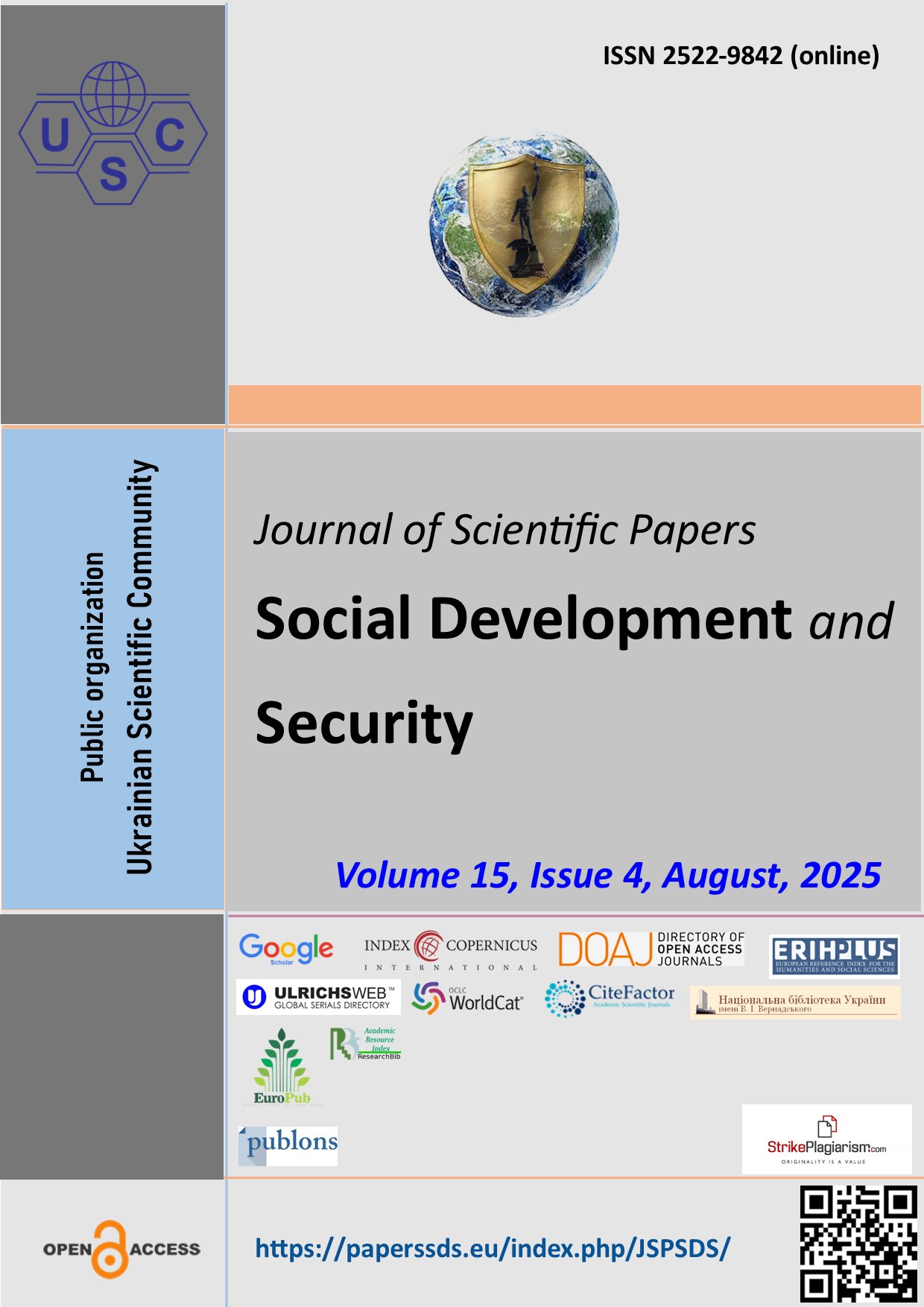The Generatıonal Dıvısıon of Warfare and Controversıal Issues
Abstract
Purpose. To identify the transformational trends and controversial points of the changing face of military violence in the context of the concept of “Generations of warfare”.
Method. Historical, comparative analysis, systematic approach, and structural analysis methods.
Findings. Although the concept of “Generations of warfare” allows for a systematic study of the transformations from the classical to the hybrid form of military violence, and for the identification of the specific developmental determinants of different conflict generations, it should not be considered perfect. The incompleteness of generations of warfare, the lack of fundamental differences between some generations, is considered a new challenge to this concept.
Theoretical implications. The concept of “Generations of warfare”, put forward by Lind in 1989, does not keep pace with modern military developments and armed conflicts, the concept of “generations of warfare” is not defined by clear boundaries. This theory is unable to explain the subsequent transformation of methods and means of military operations, the decisive impact of non-kinetic means – drones, artificial intelligence and cyberattacks – on military skill, as well as the essence of technology-based cyberwarfare and hybrid wars. This gap has been filled in the study of 5th generation warfare.
Practical implications. The concept of “Generations of warfare” has had a significant impact on the improvement of combat equipment, the emergence of new tactics, and the transformation of military skills. With the help of the concept of “Generations of warfare”, practitioners can study the dynamics of military and military-practical transformations that have marked a huge period in human history, from the classical form of military violence to the hybrid form and become familiar with the shortcomings in this direction.
Value. This article aims to study the dominant strategies and technologies of each generation of warfare in the context of the concept of “Generations of Warfare”, to explain the problematic aspects and to improve it in accordance with the requirements of new transformations.
Downloads
References
Maria do Céu Pinto Arena. The evolution of conflict: Fourth-generation warfare. Available from : https://fibrenamics.com/index.php/en/news/the-evolution-of-conflict-fourth-generation-warfare
Fiza Bibi Ameen. Five Generations of Warfare: The Evolution of Military Landscape. Available from : https://www.paradigmshift.com.pk/warfare-generations/.
Makarenko, S. I., Ivanov, M. S. Network-centric warfare – principles, technologies, examples and prospects. Monograph. – St. Petersburg: Science-intensive technologies, 2018. – 898 p.
Andrew Marshall. What are the generations of war / Boot camp and military fitness institute, 14.07.22. Available from : https://bootcampmilitaryfitnessinstitute.com/2022/07/14/what-are-the-generations-of-warfare/
Fourth-generation warfare (4 GW). Available from : https://www.ebsco.com/research-starters/history/fourth-generation-warfare-4gw).
Echevarria, J. A. Fourth Generation War and Other Myths Archived 2018-04-22 at the Wayback Machine, Strategic Studies Institute, November 2005.
Global Insurgency and the Future of Armed Conflict: Debating Fourth-generation Warfare, edited by Terry Terriff, Aaron Karp and Regina Karp. New York: Routledge, 2008, p. 68.
Abbott, Daniel (2010). The Handbook of Fifth-Generation Warfare. Nimble Books. p. 20.
Michael, George (2012). Lone Wolf Terror and the Rise of Leaderless Resistance. Vanderbilt University Press. p. 157.
Hafsa Nawaz. 5th Generation War: A War Without Borders and its Impact on Global Security / Modern diplomacy. November 25, 2024. Available from : https://moderndiplomacy.eu/2024/11/25/5th-generation-war-a-war-without-borders-and-its-impact-on-global-security
Abstract views: 97 PDF Downloads: 39
Copyright (c) 2025 Zafar Nuri Najafov

This work is licensed under a Creative Commons Attribution 4.0 International License.
The authors agree with the following conditions:
1. Authors retain copyright and grant the journal right of first publication (Download agreement) with the work simultaneously licensed under a Creative Commons Attribution License that allows others to share the work with an acknowledgment of the work's authorship and initial publication in this journal.
2. Authors have the right to complete individual additional agreements for the non-exclusive spreading of the journal’s published version of the work (for example, to post work in the electronic repository of the institution or to publish it as part of a monograph), with the reference to the first publication of the work in this journal.
3. Journal’s politics allows and encourages the placement on the Internet (for example, in the repositories of institutions, personal websites, SSRN, ResearchGate, MPRA, SSOAR, etc.) manuscript of the work by the authors, before and during the process of viewing it by this journal, because it can lead to a productive research discussion and positively affect the efficiency and dynamics of citing the published work (see The Effect of Open Access).
















